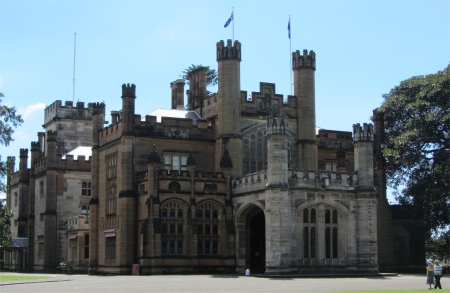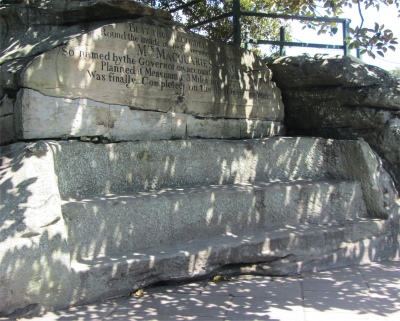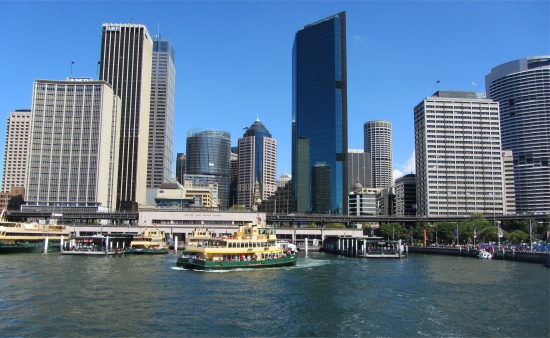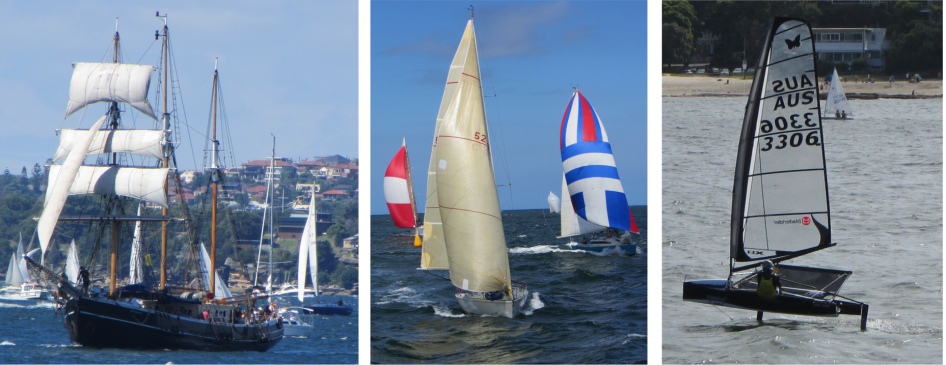
The Hire Company Won't Be Happy With This
|
As I walked through the Rocks area, a negative relief sculpture carved in sandstone told the story of the three human elements that kick-started this country: settlers, soldiers and convicts.
Governor Phillip was given the power to grant land in small parcels to ex-convicts. His instructions also suggested that "every reasonable encouragement" be given to soldiers and other free persons wanting to settle. In 1789 James Ruse was given a free pardon, supplied with seed, livestock, farm implements, convict labour and a few acres at Rose Hill and thus became Australia's first settler.
Australia's first 11 free immigrants landed in Sydney in 1793 in response to repeated requests for experienced farmers, mechanics and convict supervisors. 63,000 convicts and 14,000 free immigrants arrived in Australia between 1788 and 1830. Land grants were abolished in 1831. Thereafter Crown land was sold at fixed prices with the income going to England to subsidise schemes of free or inexpensive immigration.

Walkway to Tumbalong Park
|
Between 1830 and 1850, 83,000 convicts and 173,000 free settlers arrived bringing Australia's population to 400,000. At this time there were only 7 women for each 10 men, with most people living outside the towns and engaged in some form of primary production. The 1850-60 Gold Rush period swelled the population to 1,145,000, established a decentralised pattern of inland towns and signalled the beginning of the immigration of the diverse range of nationalities that make up today's Australia.
The First Fleet arrived with 211 Marines whose primary duties were to protect the settlement and to preserve good order among the convicts. Recognising the need for a permanent body of troops adaptable to the conditions of the new penal colony, the British Government raised the NSW Corps of which the first 100 strong detachment arrived with the Second Fleet in June 1790.
The "Rum Corps", as they later came to be known, and their commanders administered the settlement between Governor Phillip's departure (1792) and Governor Hunter's arrival (1795). Shortly thereafter the colony achieved self-sufficiency in its grain production.
The Corps members embodied the first cohesive, large group of freely come settlers with the rights, privileges and duties of British citizens not limited by criminal conviction or exile. They strongly influenced the colony's political development asserting their rights as both soldiers and citizens.
27 British line regiments served in Australia between 1810 and their complete withdrawal in 1870. The original George Street Barracks were the largest Army barracks in the British colonial empire at that time. All governors between Captain Phillip (1788) and Major-General Bourke (1837) were of a Naval or Military background.
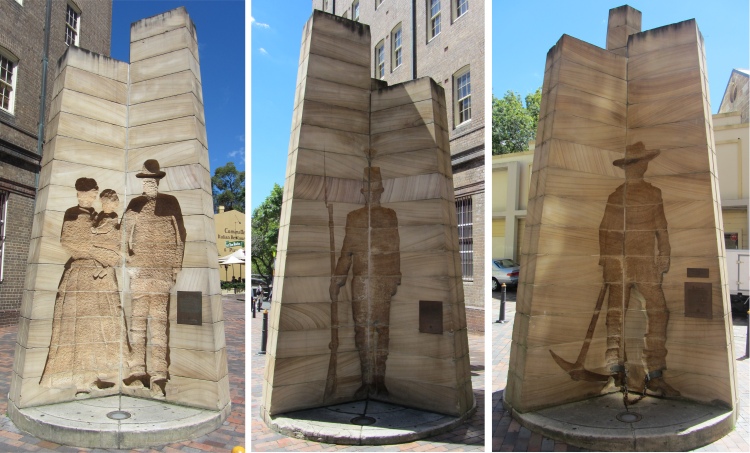
The Negative Relief Sculpture of Settlers, Soldier and Convict
|
The disposal of British criminals became a major problem after the loss (1783) of the American colonies. The jails were full of poachers, pick-pockets, forgers, highwaymen, and petty thieves. In lieu of the death penalty English magistrates often handed down sentences of transportation for 7 years. The 11 ships of the First Fleet sailed into Sydney Cove in January 1788 with about 1,500 people of whom about 780 were convicts. The first task, the land on which in the Rocks area was built, was cleared and in doing so a new nation was established.
The earliest convicts were worked and treated like animals. They laboured and slept in whatever they had on their backs when they arrived. Around 1820 the Government issued prisoners yellow duck trousers and shirts stamped with the familiar broad arrow prisoner sign. This clothing was handed out twice a year and included hats of varying styles.
Convict labour was used to clear land, construct roads (Argyle Cut) and shape sandstone for building purposes. Only the most troublesome prisoners were made to wear leg irons. The chain was held up by a short length of rope when they walked.
In 1820 the official daily ration for a male convict consisted of: 12 oz. wheat bread, 8 oz. maize meal, 1 ld. beef, 1/2 oz. salt, 12 oz. maize/barley bread, 1 oz. brown sugar and 1/4 oz. yellow soap.


